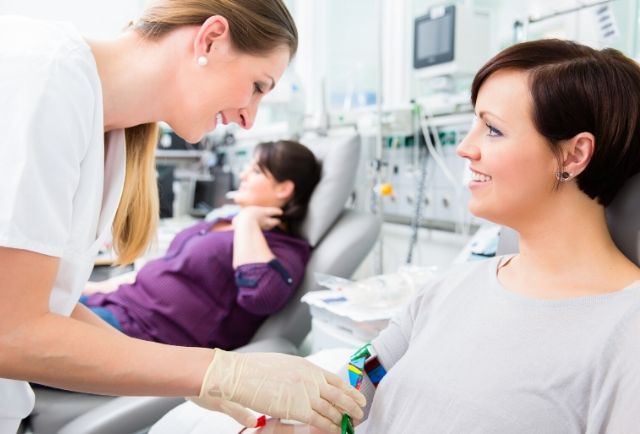Northeast Medical Institute - New Haven Campus Phlebotomy Course & Cna Class Things To Know Before You Get This
Northeast Medical Institute - New Haven Campus Phlebotomy Course & Cna Class Things To Know Before You Get This
Blog Article
What Does Northeast Medical Institute - New Haven Campus Phlebotomy Course & Cna Class Mean?
Table of ContentsThe smart Trick of Northeast Medical Institute - New Haven Campus Phlebotomy Course & Cna Class That Nobody is DiscussingUnknown Facts About Northeast Medical Institute - New Haven Campus Phlebotomy Course & Cna ClassThe Buzz on Northeast Medical Institute - New Haven Campus Phlebotomy Course & Cna ClassOur Northeast Medical Institute - New Haven Campus Phlebotomy Course & Cna Class PDFsThe Main Principles Of Northeast Medical Institute - New Haven Campus Phlebotomy Course & Cna Class The 30-Second Trick For Northeast Medical Institute - New Haven Campus Phlebotomy Course & Cna Class
The usage of such gadgets ought to be accompanied by other infection prevention and control methods, and training in their usage.For settings with reduced sources, cost is a motoring element in purchase of safety-engineered devices - PCT Training. Where safety-engineered devices are not available, skilled usage of a needle and syringe serves. Unintended direct exposure and details details concerning a case should be recorded in a register. Assistance services must be promoted for those that undertake unintended direct exposure.
One of the vital markers of quality of treatment in phlebotomy is the involvement and teamwork of the person; this is mutually beneficial to both the health and wellness worker and the individual. Clear details either composed or spoken should be available to every client who undertakes phlebotomy. Annex F offers example text for discussing the blood-sampling treatment to a patient. In the blood-sampling space for an outpatient division or clinic, give a comfortable reclining couch with an arm rest.
What Does Northeast Medical Institute - New Haven Campus Phlebotomy Course & Cna Class Mean?
Guarantee that the signs for blood tasting are plainly specified, either in a written procedure or in documented instructions (e.g. in a laboratory type). Gather all the tools required for the procedure and area it within secure and simple reach on a tray or cart, making sure that all the items are plainly noticeable.
Where the patient is grown-up and aware, adhere to the steps detailed below. Introduce on your own to the individual, and ask the client to state their full name. Examine that the laboratory form matches the patient's identity (i.e. match the client's information with the laboratory form, to guarantee precise recognition). Ask whether the patent has allergic reactions, anxieties or has ever passed out throughout previous injections or blood draws.
Make the person comfy in a supine setting (if possible). The individual has a right to refuse a test at any kind of time prior to the blood sampling, so it is vital to make sure that the person has actually comprehended the treatment - CNA Courses.
Northeast Medical Institute - New Haven Campus Phlebotomy Course & Cna Class Fundamentals Explained
Extend the client's arm and inspect the antecubital fossa or lower arm. Find a vein of a good size that is noticeable, straight and clear.
DO NOT place the needle where capillaries are drawing away, since this increases the chance of a haematoma. The vein ought to be noticeable without using the tourniquet. Situating the blood vessel will aid in identifying the right dimension of needle. Apply the tourniquet about 45 finger sizes over the venepuncture website and re-examine the vein.
Haemolysis, contamination and existence of intravenous fluid and medication can all alter the results (39. Nursing personnel and medical professionals may access main venous lines for specimens adhering to methods. However, samplings browse around these guys from main lines lug a threat of contamination or incorrect laboratory test results (https://padlet.com/gordonmarvin28/my-radiant-padlet-imtyvu6x2iod1dvs). It serves, yet not ideal, to attract blood samplings when initial introducing an in-dwelling venous gadget, prior to linking the cannula to the intravenous liquids.
A Biased View of Northeast Medical Institute - New Haven Campus Phlebotomy Course & Cna Class
Permit the location to dry. Failing to allow adequate call time increases the danger of contamination. DO NOT touch the cleansed site; in particular, DO NOT put a finger over the blood vessel to direct the shaft of the revealed needle. It the website is touched, repeat the sanitation. Perform venepuncture as adheres to.
Ask the person to form a clenched fist so the capillaries are much more prominent. Get in the blood vessel promptly at a 30 level angle or less, and proceed to present the needle along the capillary at the simplest angle of access - Phlebotomy Training. When sufficient blood has been accumulated, release the tourniquet BEFORE withdrawing the needle
3 Easy Facts About Northeast Medical Institute - New Haven Campus Phlebotomy Course & Cna Class Explained
Take out the needle gently and apply mild stress to the site with a clean gauze or completely dry cotton-wool round. Ask the patient to hold the gauze or cotton woollen in area, with the arm prolonged and raised. Ask the person NOT to bend the arm, due to the fact that doing so creates a haematoma.

Some Known Factual Statements About Northeast Medical Institute - New Haven Campus Phlebotomy Course & Cna Class
Do not push the syringe bettor because additional pressure raises the danger of haemolysis. Where possible, maintain televisions in a rack and relocate the shelf towards you. Infuse downwards into the proper coloured stopper. DO NOT eliminate the stopper because it will certainly launch the vacuum cleaner. If the sample tube does not have a rubber stopper, infuse extremely gradually into television as reducing the pressure and speed used to transfer the sampling lowers the risk of haemolysis.

Report this page